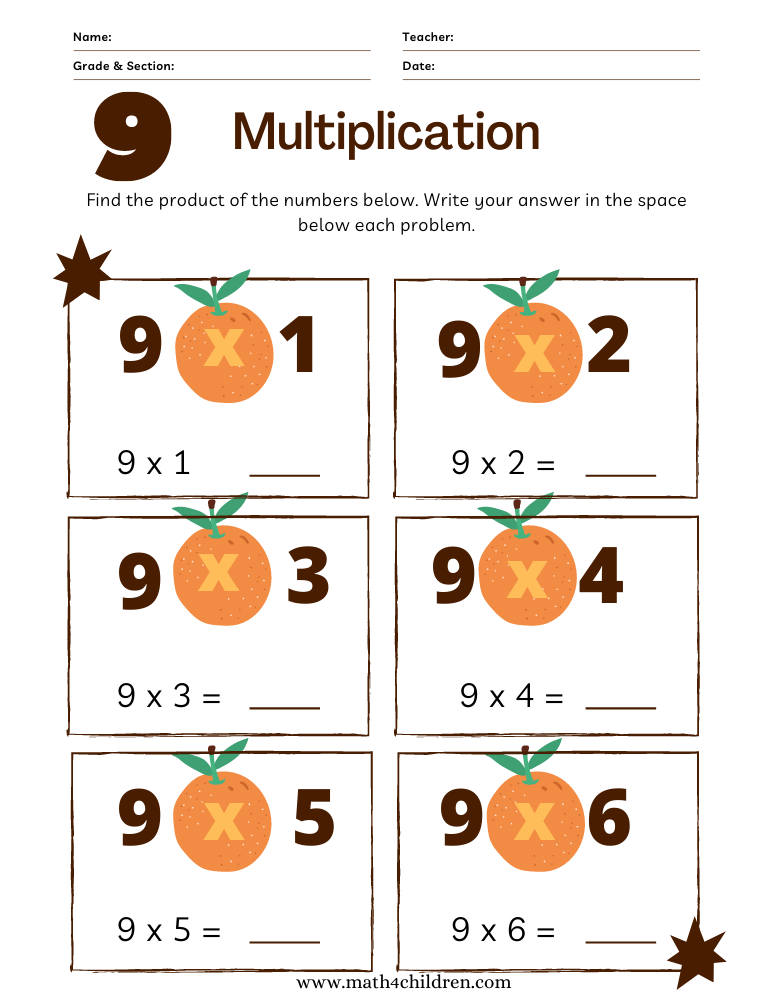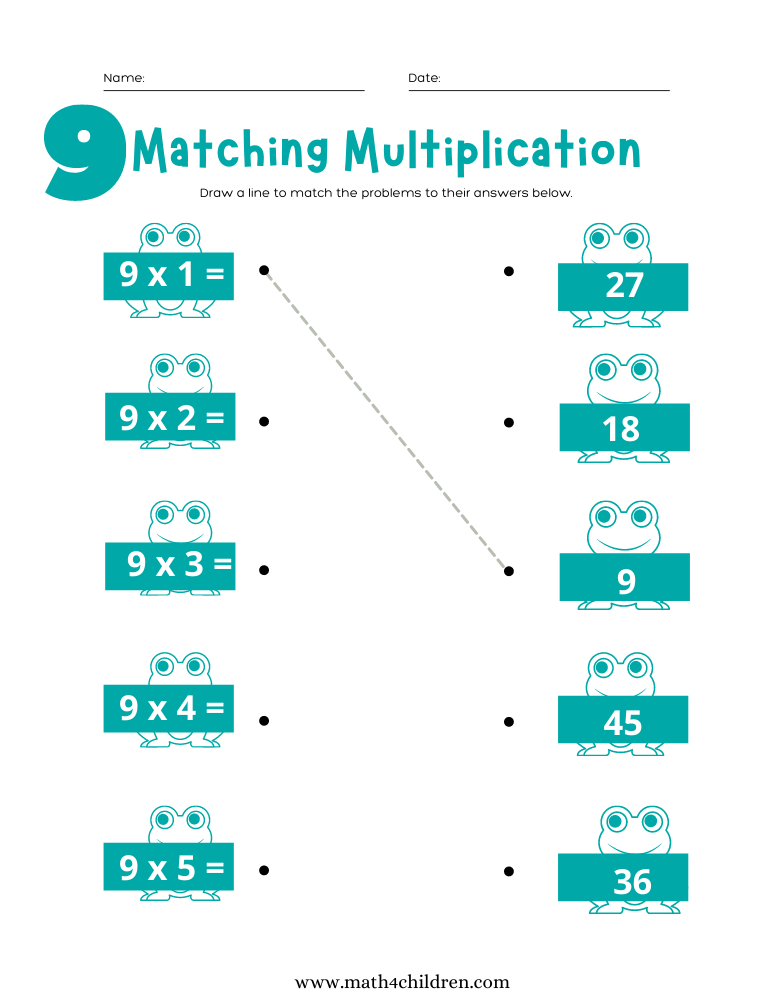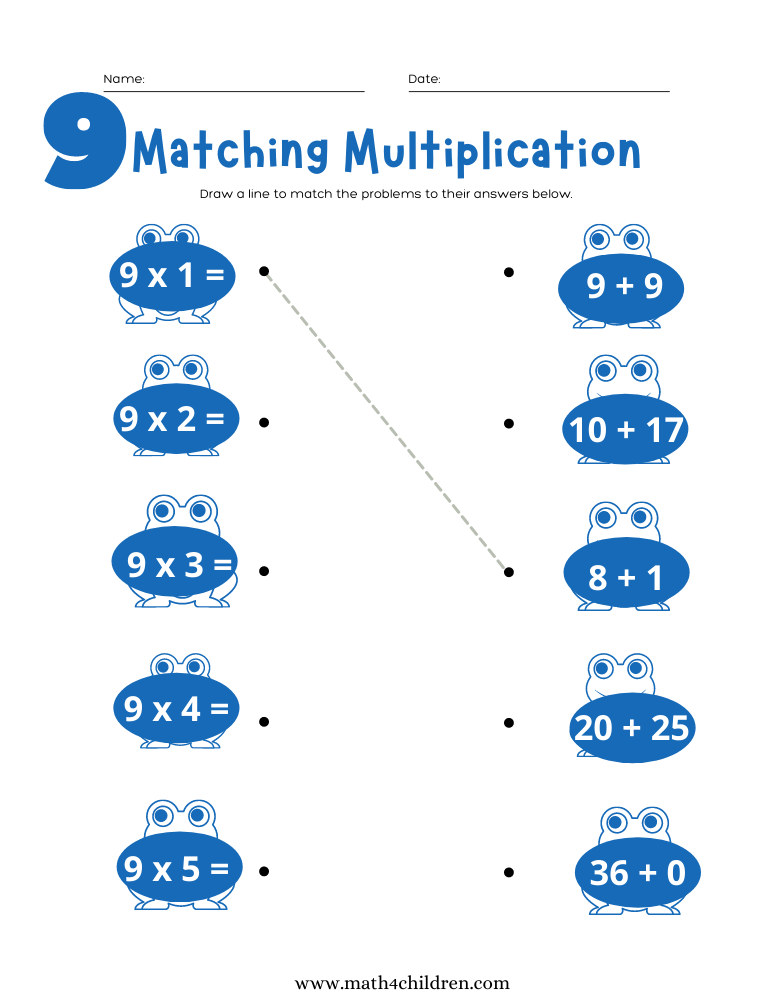Times Tables of 9 | Multiplication of Numbers By 9
Learning multiplication tables is an essential skill for students in their mathematical journey. While memorizing all the multiplication facts may seem overwhelming at first, breaking them down and focusing on individual tables can make the process more manageable. In this article, we will explore the times tables of 9, provide effective learning strategies, and highlight their practical applications. Let's dive in!
1. Introduction
Multiplication is the process of repeated addition and plays a crucial role in various mathematical operations. Times tables refer to the multiplication facts from 1 to 10 for each number. Mastering these tables enhances mathematical fluency, problem-solving abilities, and overall numerical understanding.
2. Understanding the Importance of Times Tables
Times tables serve as the building blocks for advanced mathematical concepts. When students have a strong foundation in multiplication, it becomes easier for them to tackle complex calculations, algebraic equations, and even real-life problems. Proficiency in times tables enables students to solve problems more efficiently and with greater confidence.
3. Introducing the Times Tables of 9
The times tables of 9 are a fascinating set of multiplication facts. They exhibit unique patterns and properties that make them interesting to learn. Let's take a look at the multiplication facts for the times tables of 9:
- 9 x 1 = 9
- 9 x 2 = 18
- 9 x 3 = 27
- 9 x 4 = 36
- 9 x 5 = 45
- 9 x 6 = 54
- 9 x 7 = 63
- 9 x 8 = 72
- 9 x 9 = 81
- 9 x 10 = 90
4. Learning Strategies for the Times Tables of 9
Mastering the times tables of 9 can be an enjoyable and engaging process. Here are some effective learning strategies to help you grasp and retain these multiplication facts:
4.1 Counting Up Method
The counting up method is a simple yet effective technique for learning the times tables of 9. Start with 9 and count up by 9 for each subsequent multiplication fact. For example:
- 9 x 1 = 9
- 9 x 2 = 9 + 9 = 18
- 9 x 3 = 18 + 9 = 27
- and so on...
4.2 Finger Trick
The finger trick is a visual and tactile strategy that aids in memorizing the times tables of 9. Extend both hands with fingers spread out. To find the product of, for instance, 9 x 4, fold down the fourth finger. You will have 3 fingers before the folded finger and 6 fingers after, representing 36.
4.3 Multiplication Patterns
The times tables of 9 have interesting patterns that can be leveraged for quicker mental calculations. Notice that the tens digit decreases by 1 while the ones digit increases by 1 with each multiplication. For example, 9 x 3 = 27, 9 x 4 = 36, and so on.
4.4 Practice with Times Tables Worksheets
Utilize times tables worksheets specifically designed for the times tables of 9. These worksheets provide structured practice and reinforcement for better retention. Regular practice with worksheets can significantly improve speed and accuracy in multiplication.
5. Tips for Memorizing the Times Tables of 9
Memorization can be a challenging task, but with the following tips, you can make it easier and more effective:
- Practice regularly: Dedicate a few minutes each day to practice the times tables of 9.
- Use mnemonic devices: Create rhymes, songs, or memory aids to associate with the multiplication facts.
- Visualize the patterns: Imagine the numerical patterns in your mind to aid memorization.
- Test yourself: Quiz yourself regularly to assess your progress and identify areas for improvement.
- Seek interactive resources: Utilize online games, apps, or flashcards for an engaging learning experience.
6. Common Mistakes to Avoid
When learning the times tables of 9, it's important to be aware of common mistakes that students often make. Avoid the following pitfalls:
- Misplacing the digits: Ensure the ones and tens digits are correctly aligned during multiplication.
- Skipping practice: Consistency is key. Avoid skipping practice sessions and maintain a regular study routine.
- Relying solely on rote memorization: Instead of memorizing blindly, focus on understanding the patterns and concepts behind the multiplication facts.
7. Applying the Times Tables of 9 in Real Life
The times tables of 9 find practical applications in various real-life scenarios. Here are a few examples:
- Calculating distances: If a car travels at a speed of 9 miles per hour, you can easily determine the distance it will cover in a given time.
- Estimating costs: Suppose an item costs $9, and you want to buy 7 of them. Knowing the times tables of 9 allows you to quickly estimate the total cost.
- Dividing by 9: Understanding the times tables of 9 helps with dividing numbers by 9, making mental division more manageable.
8. Conclusion
Mastering the times tables of 9 is a valuable skill that enhances mathematical proficiency and problem-solving abilities. By employing effective learning strategies, such as the counting up method, finger trick, and multiplication patterns, students can confidently navigate the times tables of 9. Regular practice, along with the application of these multiplication facts in real-life scenarios, solidifies understanding and promotes mathematical fluency.
9. Frequently Asked Questions (FAQs)
Q1. Are there any tricks to memorize the times tables of 9 more easily? Yes, various techniques can make memorization easier. The counting up method, finger trick, and identifying multiplication patterns are effective strategies for learning the times tables of 9.
Q2. Why are times tables important for students? Times tables are fundamental to developing mathematical fluency, problem-solving skills, and a strong foundation for advanced mathematics. Proficiency in times tables simplifies complex calculations and promotes numerical understanding.
Q3. Can I use online resources to practice the times tables of 9? Absolutely! There are numerous online resources, such as interactive games, apps, and worksheets, that provide an engaging learning experience for practicing the times tables of 9.
Q4. How can I avoid common mistakes when learning the times tables of 9? Pay close attention to digit placement during multiplication, maintain consistent practice, and focus on understanding the underlying concepts rather than relying solely on rote memorization.
Q5. How can I apply the times tables of 9 in real-life situations? The times tables of 9 have practical applications in calculating distances, estimating costs, and simplifying division. Understanding these multiplication facts allows for quick mental calculations in real-life scenarios.
Learn how to multiply video lesson












